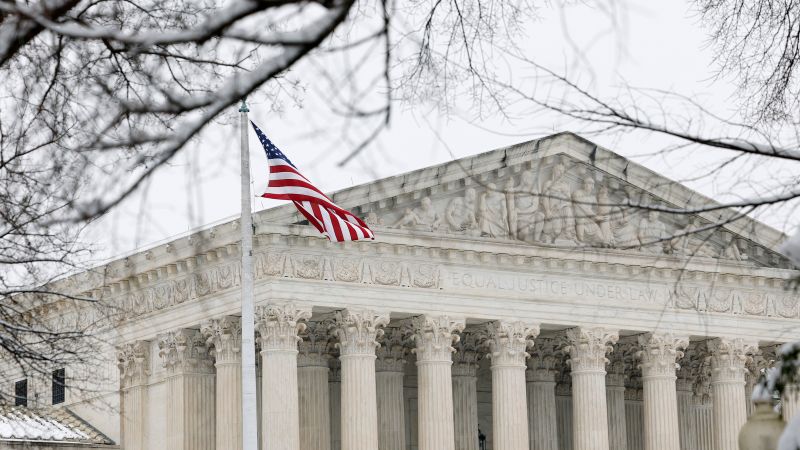The Supreme Court’s recent decision to allow the Trump administration to enforce a ban on transgender military service members has significant ramifications for the military and its personnel. This ruling represents a notable victory for President Donald Trump, as it facilitates his efforts to reinstate certain elements of his second-term agenda that faced obstacles from lower courts. These lower courts had previously undertaken reviews of numerous legal challenges related to Trump’s policies, effectively halting various initiatives along the way.
In the context of emergency rulings, the Supreme Court refrained from disclosing its reasoning behind the decision, a common practice with such swift actions. Notably, the three liberal justices dissented, yet they too did not provide an explanation for their dissenting opinion. During the Trump administration’s first term, the Supreme Court previously enabled the enforcement of a similar – though less stringent – ban on transgender service members, which was later reversed by President Joe Biden upon taking office.
The new policy states that service members diagnosed with gender dysphoria or displaying related symptoms will be processed for separation from military service. Furthermore, the Pentagon has prohibited transgender individuals from enlisting in any branch of the armed forces. The exact number of transgender individuals currently serving in the military remains uncertain; however, a 2018 estimate from an independent research institute suggested approximately 14,000 transgender troops were on active duty at that time.
A senior defense official indicated to CNN that around 4,240 service members across various branches, including active-duty, reserve, and the National Guard, have a diagnosis of gender dysphoria, which refers to the psychological distress experienced when one’s gender identity does not align with one’s sex assigned at birth. It’s crucial to note that not every transgender individual experiences gender dysphoria.
Upon taking office in January 2017, President Trump signed an executive order mandating the Pentagon to adopt its own policies depicting transgender service members as incompatible with military service. The administration posited that allowing transgender individuals to serve would undermine military effectiveness and cohesion. However, federal judges who reviewed these challenges argued that the policy infringed upon the constitutional rights of transgender Americans.
In a case brought before the Supreme Court on an emergency basis, U.S. District Judge Benjamin Settle from Washington state stated that the administration failed to acknowledge the reality that transgender service members had served openly for years without causing any observable detriment to military readiness or morale. He pointed out that evidence presented during the challenges suggested that open transgender service improved military interests rather than detracted from them.
The Trump administration countered that Judge Settle had exceeded his authority by delving into military affairs, requesting the Supreme Court to stay the lower court’s ruling after a federal appeals court in San Francisco declined to intervene. Solicitor General D. John Sauer argued that the district court’s injunction did not align with the deference owed to military professionals’ judgments and highlighted potential negative consequences for military readiness if the Supreme Court did not act.
On the other hand, attorneys representing the challenges contended that a ruling favoring the Trump administration would precipitate the immediate discharge of numerous service members, leading to disturbances within military units and risking operational effectiveness. LGBTQ rights organizations, such as Lambda Legal and the Human Rights Campaign Foundation, voiced that the Supreme Court’s decision was a profound setback for transgender military personnel and accused it of endorsing discriminatory practices under the guise of military readiness.
As a parallel event, the D.C. Circuit Court of Appeals is currently deliberating whether to allow a preliminary injunction issued by U.S. District Judge Ana Reyes to take effect. Meanwhile, Nic Talbott, a transgender Army lieutenant and lead plaintiff in a separate case, expressed disappointment over the Supreme Court’s ruling but reaffirmed his commitment to serve and fight against the ban.
The implications of this ruling remain substantial and reflective of ongoing societal debates surrounding LGBTQ rights within the armed forces. Many advocates and military personnel remain determined to challenge these policies, asserting that the strength and readiness of America’s military should encompass its diverse composition, including transgender service members committed to serving their country. This ongoing legal battle, alongside various public sentiments, emphasizes the complexities of LGBTQ representation in military spaces and the broader discourse of equal rights within the armed forces.



